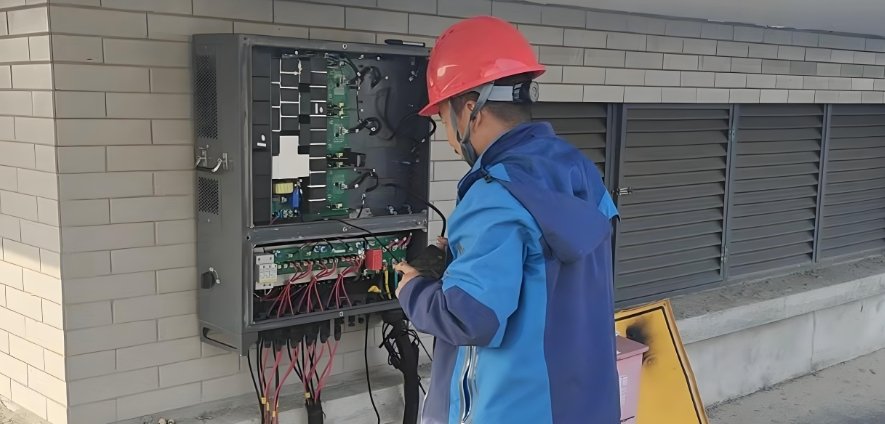Choosing the right inverter cables is crucial for maintaining safety, efficiency, and the long-term performance of your energy system. Here’s a step-by-step guide to help you select the best cables for your inverter.
The selection of inverter cables involves considering factors like load requirements, cable gauge, material, length, and manufacturer guidelines. These steps ensure you get cables that deliver reliable performance and comply with safety standards.
1. Determine Load Requirements
Understanding the load your inverter will handle is the first step in choosing cables. The cable size should match the current the inverter will produce.
The load requirement is determined by the power demand of your appliances and the inverter’s rated output. To calculate, check your inverter's output capacity (in watts) and the total load of all devices that will be powered. Always consider future expansion needs when calculating the load.
| Load Type | Power (W) | Cable Size (AWG) | Cable Size (mm²) |
|---|---|---|---|
| Low Load (up to 2kW) | 2,000W | 12 AWG | 4 mm² |
| Medium Load (2kW-5kW) | 3,500W | 10 AWG | 6 mm² |
| High Load (5kW and above) | 7,500W | 8 AWG | 10 mm² |
2. Select Cable Gauge
The American Wire Gauge (AWG) size determines the cable's capacity to safely carry the current. Selecting the correct gauge is crucial to prevent overheating and ensure efficiency.
The gauge size should be selected based on both the current and the cable length. For short distances, smaller gauges (higher numbers) may suffice, but longer distances require larger cables to reduce voltage drop. Ensure that the cable gauge you choose can handle the current without exceeding its safe limit.
| Distance (m) | Power (W) | Recommended Cable Gauge (AWG) | Recommended Cable Gauge (mm²) |
|---|---|---|---|
| Up to 6 m | 2kW - 5kW | 12 AWG | 4 mm² |
| 6 m - 15 m | 5kW - 10kW | 10 AWG | 6 mm² |
| Over 15 m | 10kW and above | 8 AWG | 10 mm² |
3. Choose Cable Material
The material of the cable affects its conductivity and durability. Copper is the most common material used, but aluminum is an affordable alternative for large setups.
Copper cables are highly conductive, allowing electricity to flow with minimal resistance. Aluminum, while less conductive, is lighter and cheaper, making it a viable option for long-distance wiring. However, for residential and small commercial setups, copper remains the preferred material due to its superior performance and longevity.
| Material | Conductivity | Lifespan | Cost |
|---|---|---|---|
| Copper | High | Long | Higher |
| Aluminum | Lower | Medium | Lower |
4. Consider Cable Length
Cable length is critical because longer cables result in greater voltage drop, which can reduce system efficiency. Keep cable lengths as short as possible.
The longer the cable, the higher the voltage drop. For efficient energy transfer, ensure that the voltage drop stays under 3%, as recommended by the National Electric Code (NEC). If long cable runs are unavoidable, use a larger gauge cable to minimize the voltage loss.
| Distance (m) | Voltage Drop (%) | Cable Size (AWG) | Cable Size (mm²) |
|---|---|---|---|
| Up to 6 m | Less than 1% | 12 AWG | 4 mm² |
| 6 m - 15 m | 1 - 2% | 10 AWG | 6 mm² |
| Over 15 m | Over 2% | 8 AWG | 10 mm² |
5. Refer to Manufacturer Guidelines
Always refer to the inverter's manufacturer guidelines for specific cable recommendations, as they are tailored to ensure compatibility and optimal performance.
Inverter manufacturers typically provide detailed specifications on the type, size, and material of cables that are compatible with their units. Following these guidelines is essential to avoid performance issues or potential safety hazards.
| Manufacturer | Recommended Cable Size (AWG) | Recommended Cable Size (mm²) | Material | Certification |
|---|---|---|---|---|
| Deye Hybrid Inverter | 10 AWG - 6 AWG | 6 mm² - 10 mm² | Copper | UL Listed |
| Huawei Inverter | 12 AWG - 8 AWG | 4 mm² - 8 mm² | Copper | CE Certified |
| Sungrow Inverter | 10 AWG - 6 AWG | 6 mm² - 10 mm² | Copper | UL Listed |
Conclusion
Choosing the right inverter cables involves understanding load requirements, selecting the appropriate cable gauge and material, considering the distance, and following the manufacturer’s recommendations. These steps will help you create a safe, efficient, and durable energy system.
By following these steps, you can ensure that your inverter system operates at its best, minimizing safety risks and maximizing performance.




